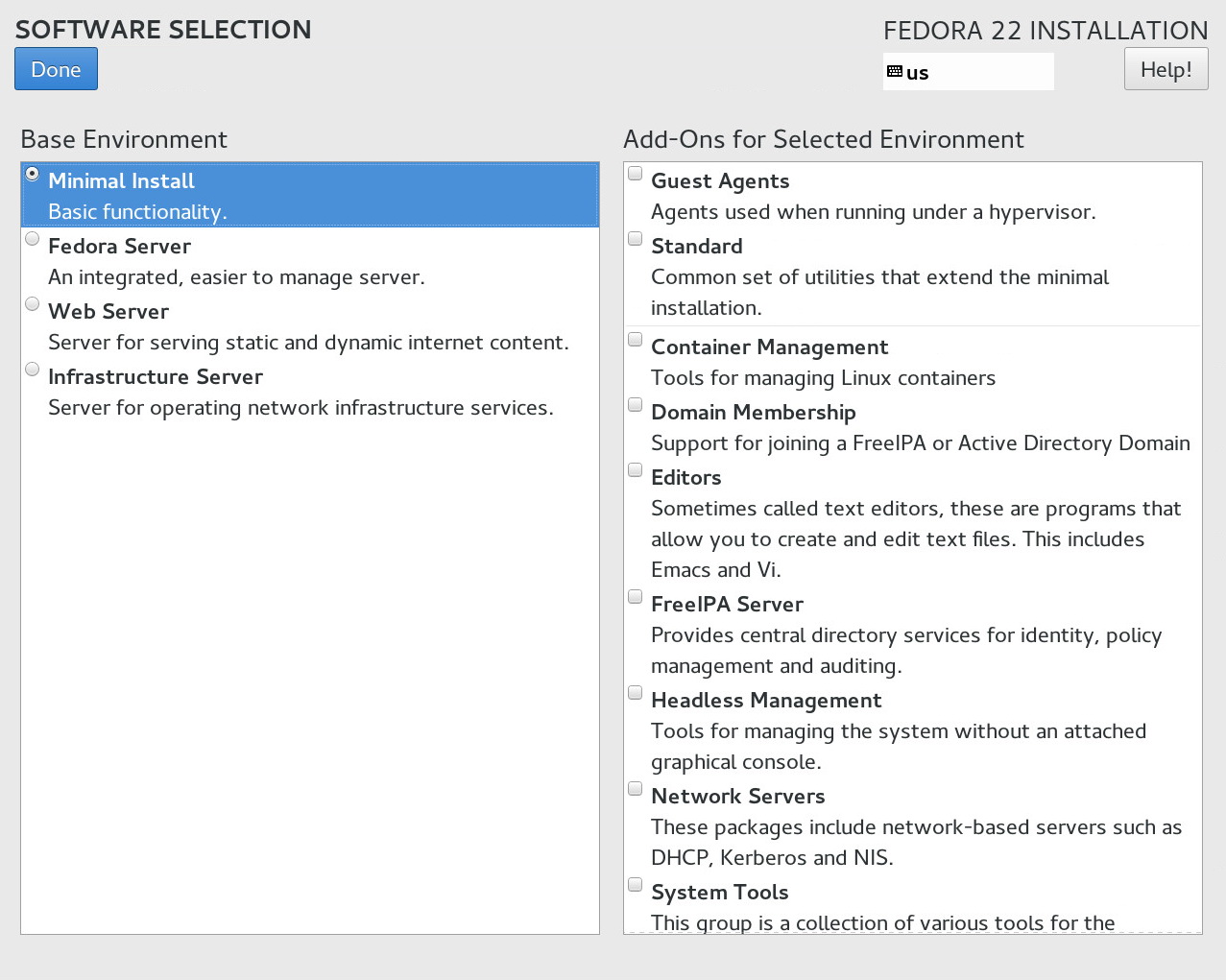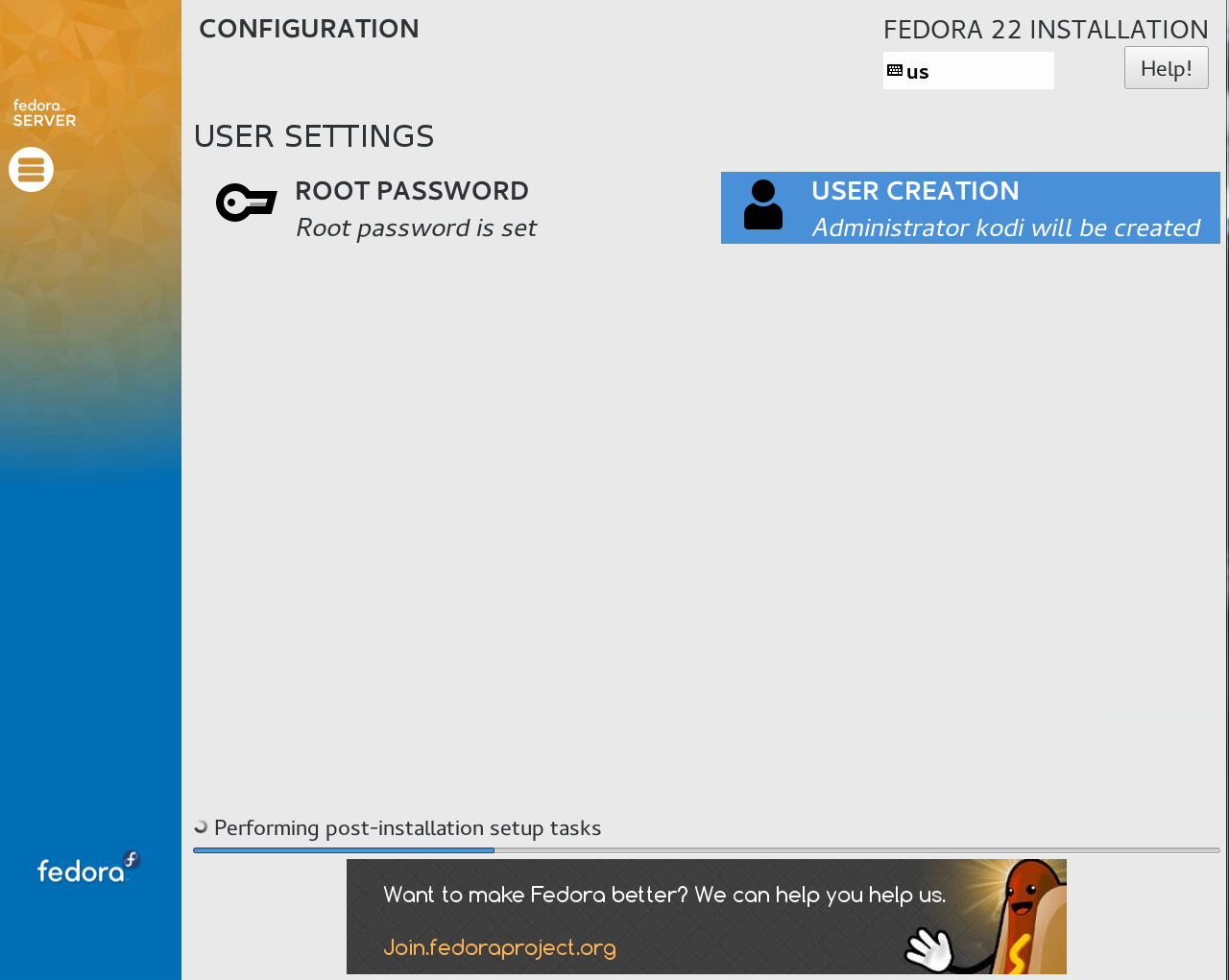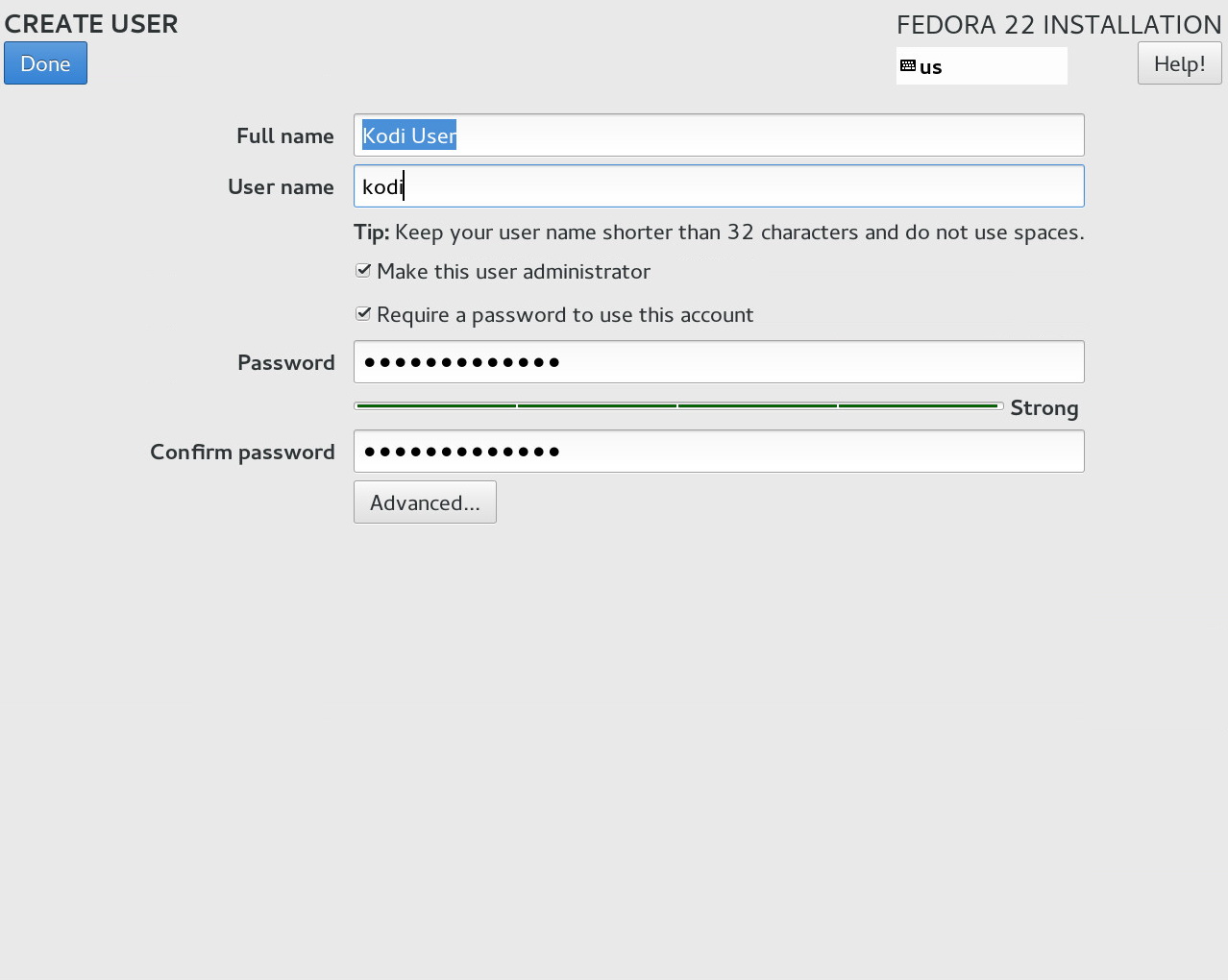Archive:Install Kodi on Fedora 26 using RPMFusion packages
Current State of This Guide
This guide is currently a work-in-progress, with steps and illustrations being added.
At the time of writing, Kodi v14 is not yet available on RPMFusion. The latest available version is XBMC 13. 2, which is what this guide will install until Kodi v14 becomes available.
Goal
The goal of this guide is to show one way of turning a Fedora (tested on Fedora 21 x86_64) Linux environment into a standalone Kodi installation, with minimal additional software / overhead. The Kodi packages available from RPMFusion are used as the basis for this setup.
At the end of this guide you will have a set-top box style of system that, when powered up, will quickly boot and then start Kodi automatically without intervention (e.g. no need to first log in).
Assumptions
- This guide assumes you have at least a slight familiarity with Linux in general. If you know what a Bash shell is, can cut-and-paste commands, and are comfortable editing files with VI or Emacs, then you should be fine.
- It is assumed that Kodi will be installed into a freshly-installed Fedora 21 Server (x86_64) environment that was set up with no additional software specified. If you already have such an environment then you can skip the steps showing how to do a fresh-install of Fedora.
- This guide was written with the use of an nVidia-based graphics card in-mind, (tested tested with an Asus ENGT240 Silent GT240 fanless PCI-E 2. 0 card). If you have an AMD, Intel or other graphics solution, then either skip the nVidia-specific steps or substitute your own. Also, this guide covers replacing the stock Nouveau (open-source) video drivers with proprietary nVidia drivers (as obtained from Negativo17's nVidia repository) for improved performance. You can skip this if you'd prefer, although your performance mileage may vary.
- Everything is done with the goal of minimizing how many software packages / dependencies are required. For example, since Kodi will be run as a fullcreen application, there is no need for heavyweight desktop environments such as Gnome and KDE, and all the apps/clutter they introduce.
- In order to make things simpler, this guide disables both SELinux and the local firewall daemon. Ensure that the system is adequately protected by things like your internet router's firewall, and encrypted/passworded wifi (you DO have your wifi protected, right?...)
- As of release 21, Fedora comes in three flavours: Workstation, Server, and Cloud. This guide installs the Server edition (with no additional software specified) in order to get the leanest, most minimal install possible. At the time of writing, when tested this installation consumed approximately 410MB of memory (excluding buffers / cache) when playing a 1080p 5. 1-channel video. The full installation including Fedora, Kodi and a modest library of thumbnails/artwork consumed about 9GB of disk space. For the purposes of testing, a 20GB partition was used.
Installing Fedora 21
Obtaining the Fedora 21 Server (x86_64) Installation Image
Choose a Fedora mirror ( listed at https://mirrors.fedoraproject.org/publiclist/Fedora/21/x86_64/ ). Click the http link for that mirror (or FTP / rsync if preferred), and navigate through the folders as follows:
releases -> 21 -> Server -> x86_64 -> iso
Therein you should find a file named Fedora-Server-DVD-x86_64-21. iso. Note that not all mirrors have exactly the same folder structure. Just keep exploring until you find this iso image. When you do, download it and burn it to a DVD. It's also possible to create an installable USB flash drive with this ISO and install from it, or even to perform a network install without having any local DVD media, but these are outside the scope of this guide.
Configure How Fedora will be Installed
Boot from the DVD you just created. If necessary, bring up your BIOS's boot-menu by pressing <F12> (or whatever your BIOS uses) to select booting from your optical drive. When the DVD boots you will be shown a text-menu with several options. Select "Install", and proceed. The system will then boot up into Fedora's graphical installer (Anaconda). Choose your desired keyboard layout and language, and proceed. You will then be shown Anaconda's main installation screen, similar to this:
You can make whatever choices you like for everything in the LOCALIZATION and SYSTEM sections.
Ensure INSTALLATION SOURCE is set to Local Media. If not then click on it to change.
Click on SOFTWARE SELECTION and and ensure that NONE of the add-ons in the right-hand pane are selected. This screen should look as follows:
Starting the Installation and Creating a KODI User
When finished setting up all desired installation options, Begin the install - installation should look as follows:
During installation, set the password for user root by clicking ROOT PASSWORD). You should also create the non-privileged user that Kodi will run as - click USER CREATION. You can choose whatever full-name / username / password you'd like; this guide assumes a username of 'kodi'. When creating this account, check Make this user administrator. (Note: This user isn't granted superuser rights directly; rather it can run privileged commands via tools such as sudo.) The User Creation screen should looks as follows:
Rebooting into Fedora
When the installation has completed, remove the installation DVD and click REBOOT to restart the system. The system should reboot and reach a textmode console login screen, as shown below. If you reach this point then you've successfully finished a minimal install of Fedora 21.
Configuring Fedora / Installing Dependencies
Now that Fedora is installed, some configuration needs to be performed, and some dependencies need to be installed and configured.
Note: Unless otherwise mentioned, all following commands should be run as user kodi. Elevated privileges will be obtained via sudo if required.
Installing several YUM helpers, and Updating Packages To Latest Versions
There are several helper apps that will make updating your system via YUM a little faster:
- fastestmirror- Chooses the fastest repository from a mirror-list.
- deltarpm- Speeds downloads by only downloading changes between old and new RPM versions.
- priorities- Give priorities to packages from different repositories.
The following command will install them if not already installed:
sudo yum install deltarpm yum-plugin-fastestmirror yum-plugin-priorities
Then perform a full update of all installed packages (including the kernel if necessary).
sudo yum update
When you're ready, reboot the system after these steps have completed for changes to take effect (especially any Kernel updates that may have happened).
sudo systemctl reboot




